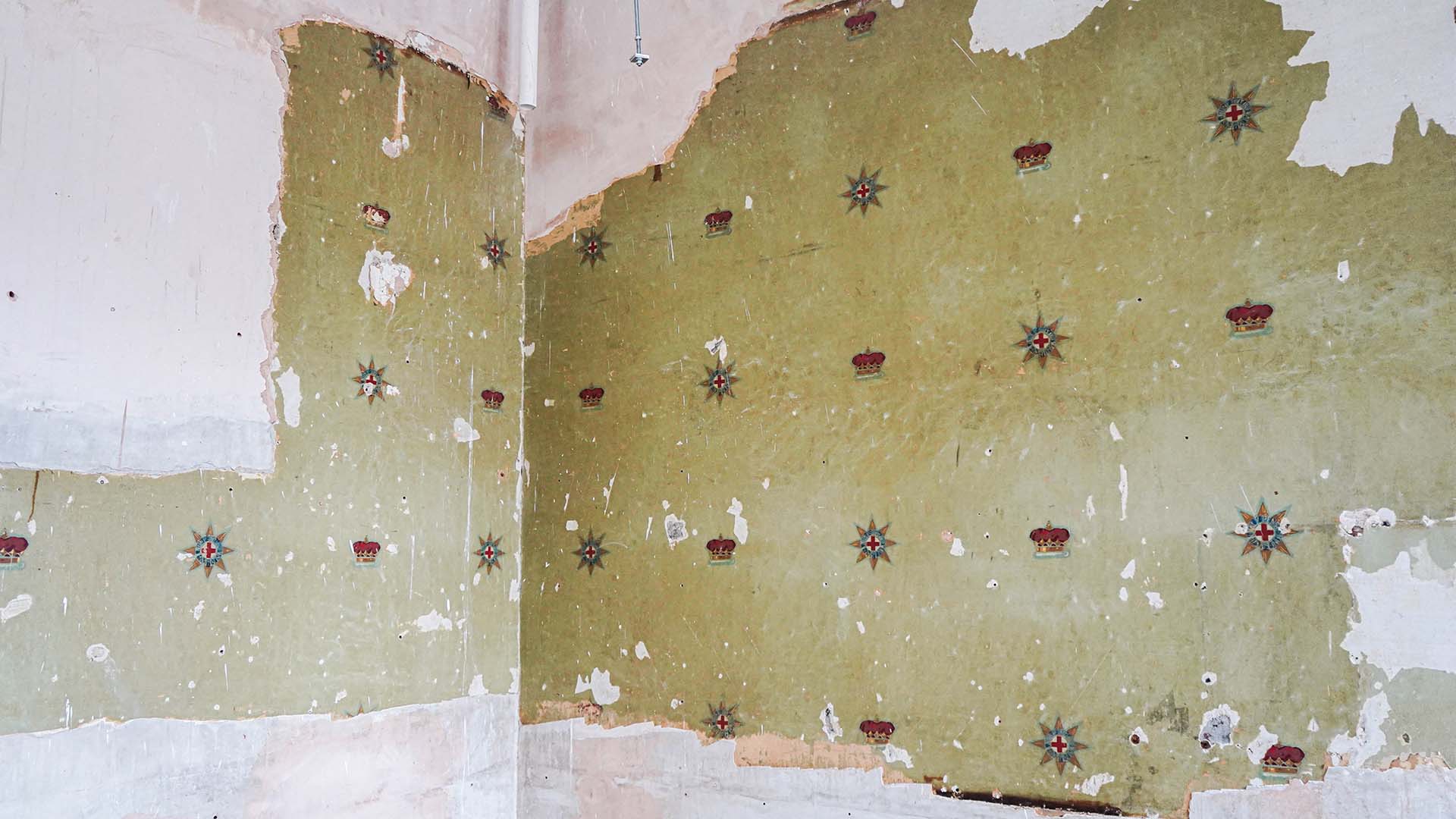
Discovering Hidden Architectural Treasures
The recent refurbishment of the Victorian‑era Ramsden Building at the University of Huddersfield has unearthed a remarkable piece of heritage: a hand‑painted wallpaper dating back to the 1880s. During the renovation, contractors stripped back layers of paint and plaster to restore the building’s original character. In a small corner office, they uncovered a wall covered in colourful, hand‑handed design featuring a crown and the affluent garter star emblematized by the Order of the Garter. This discovery offers students and staff a tangible link to the institution’s founding moments and the regions it once showcased at the 1883 Fine Art and Industrial Exhibition.
Context: The Ramsden Building and Its Role in Huddersfield’s Industrial Past
Opened in 1883, the Ramsden Building served as a hub for Huddersfield’s burgeoning industrial and artistic community. The Fine Art and Industrial Exhibition held in the building showcased local technical achievements and artistic talent to paying audiences. The interior’s decor reflected the prestige of the event and the importance the city placed on engineering, textiles, and the arts. One of the most exclusive spaces in the building was reserved for the Duke of Somerset—a guest of honour for the opening day—who had been made a Knight of the Garter in 1862. The Duke’s room featured this distinctive wallpaper, a symbol of his knighthood that was rarely displayed outside official settings.
How the Wallpaper Came to Light
During the 2024 refurbishment, Henry Boot Construction meticulously removed successive coats of paint. The project’s scale required technicians to access hidden layers beneath the exterior finish. Upon uncovering a small swath of the wall, they discovered an almost unaltered piece of paper art: a repeating pattern of crowns, garter stars, and the Latin motto “Honi soit qui mal y pense.” Recognising its historical significance, the construction team halted further work in that area and notified the university’s Heritage Quay. Archival research confirmed that the wallpaper had been installed for the Duke’s private use during the Building’s inaugural event.
The Heritage Quay’s Crucial Role
Heritage Quay, the University’s award‑winning archival service, quickly mobilised to assess and preserve the find. Dr Becky Bowd, University Archivist, led the investigation, cross‑referencing old news articles, exhibition guides, and the original building plans. They discovered that the wallpaper was commissioned by a local firm that also decorated the Hotel Dean and the Victoria Theatre, indicating the fabric’s high-quality craftsmanship.
- Identified the pattern as the garter star, a build‑up to the royalty of the Order of the Garter, historically exclusive to members like the Duke.
- Confirmed the room’s purpose as the Duke’s VIP space through newspaper documentation.
- Determined that the wallpaper was removed and hidden when the space transitioned to a classroom following the building’s expansion.
Conservation Challenges and Triumphs
Restoring a piece of 19th‑century wallpaper is no simple task. Conservationist Louise Drover, known from shows such as Treasures of the National Trust, described the wallpaper’s texture as “starch‑based with animal glue.” The adhesive’s resilience made removal risky, prompting her to leave the majority of the wall in place. Only a small section was carefully extracted for archival purposes, ensuring the original wall’s integrity while capturing a sample for future study.
What the Conservation Reveal Means for Future Use
The rest of the wall will remain untouched, serving as a striking feature for future occupants of the refurbished building. By preserving the original design, the university provides a living classroom for history, architecture, and material science students to observe Victorian decorative techniques first‑hand. The wallpaper can also inspire design projects, encouraging students to integrate historical motifs into modern learning spaces.
Beyond Wallpaper: Other Hidden Treasures
The Ramsden Building’s restoration unearthed additional artefacts, such as old maps of Australia and Africa hidden beneath a false ceiling. The project team had also discovered paintings and original fixtures that had been covered over by later additions. These finds are being catalogued and preserved, making the building a showcase of the city’s industrial and global reach in the Victorian era.
Planning for the 2026 Reopening
The university plans a special viewing of the wallpaper for alumni, current students, and staff before the building fully reopens in 2026. Heritage Quay will also livestream the unveiling on social media, inviting a wider audience to witness the restoration process. These events aim to deepen engagement with the University’s heritage, offering context for the daily academic life that currently occupies the space.
Why This Matters to Students and Staff
For students in architecture, history, museum studies, and conservation, the Ramsden Building presents a live case study. Experiencing the restoration firsthand provides insight into project management, heritage legislation, and material preservation techniques. The simplified restoration narrative—original wallpaper discovered, preserved, and showcased—serves as a template for future preservation projects on campus.
Staff members can view the restored areas as a source of inspiration for integrating contemporary design with historic elements in other university buildings. By understanding how the university preserves heritage while adapting spaces for modern use, staff can contribute to future redevelopment proposals that respect historical integrity and satisfy contemporary standards.
How to Get Involved or Learn More
Interested in the Ramsden Building’s story, or want to support the university’s heritage preservation efforts? Here are ways you can engage:
- Attend an Open Day to walk through the updated Ramsden Building and view the restored wallpaper.
- Explore Heritage Quay to learn how the university’s archives contribute to preservation.
- Submit your application today if you’re ready to join a university that values its history as much as its future.
- Schedule a free consultation to discuss campus design improvements that honour heritage.
- Share your experiences or questions in the comments below or on social media using #RamsdenHeritage.
Whether you’re a senior lecturer, a postgraduate researcher, or a prospective student exploring the University of Huddersfield, these heritage insights enrich your understanding of the campus’s legacy and its ongoing commitment to sustainable, historically conscious development.

